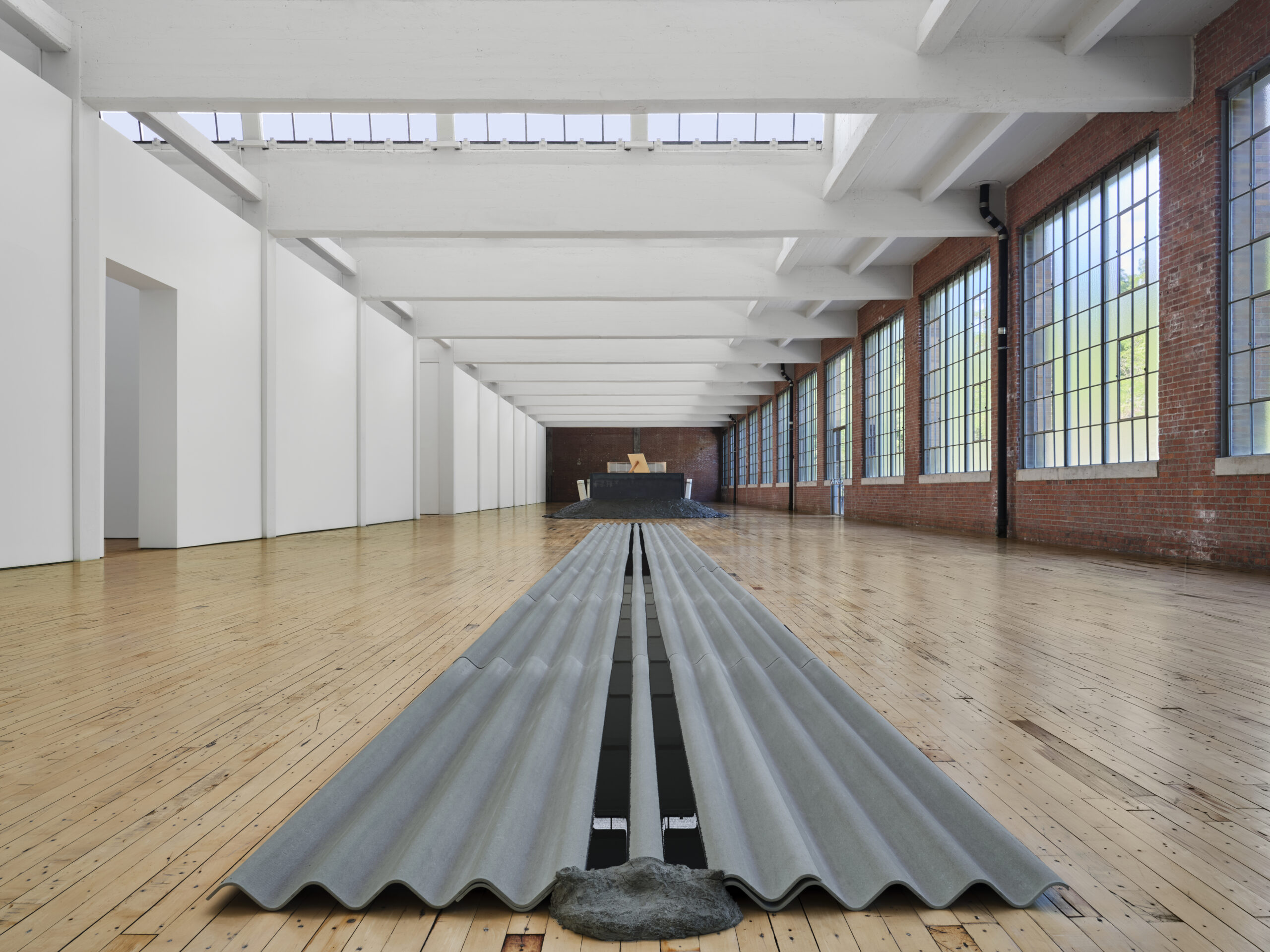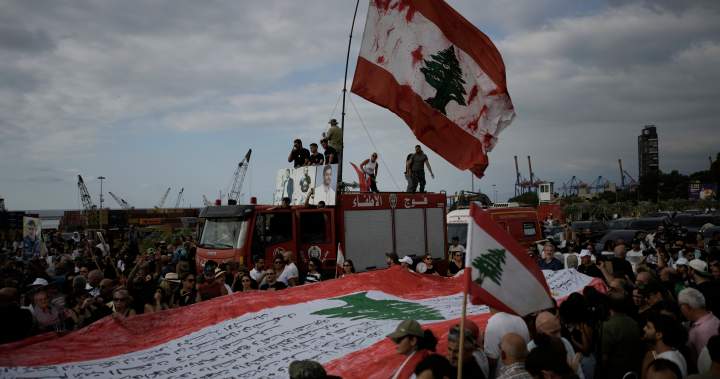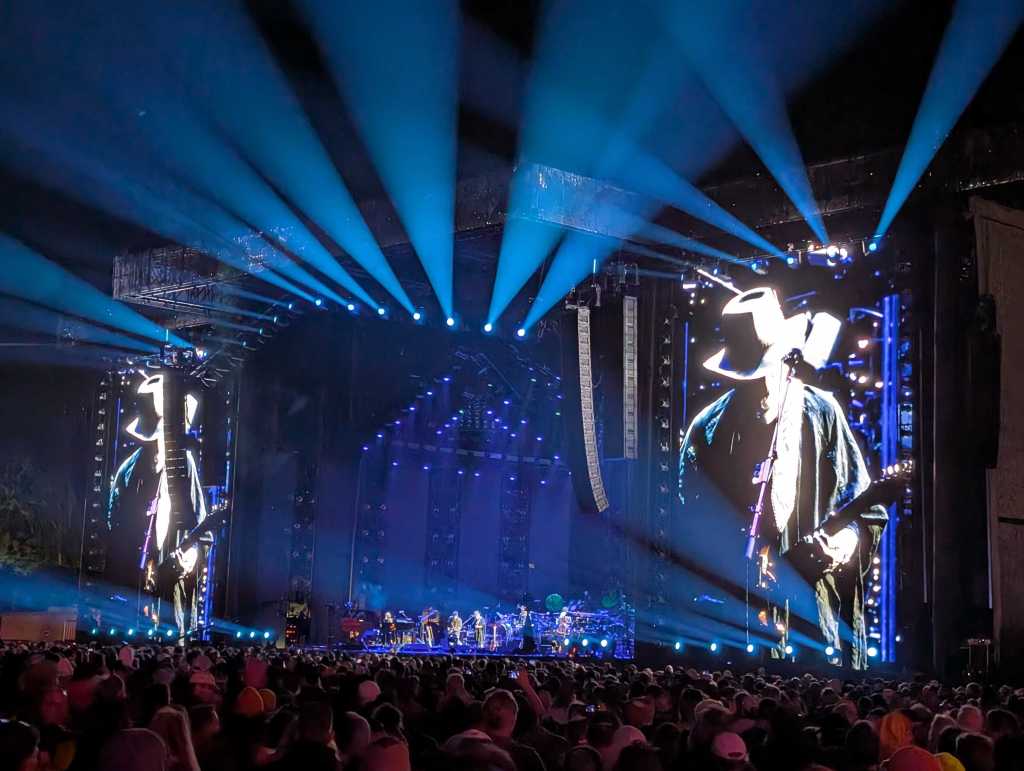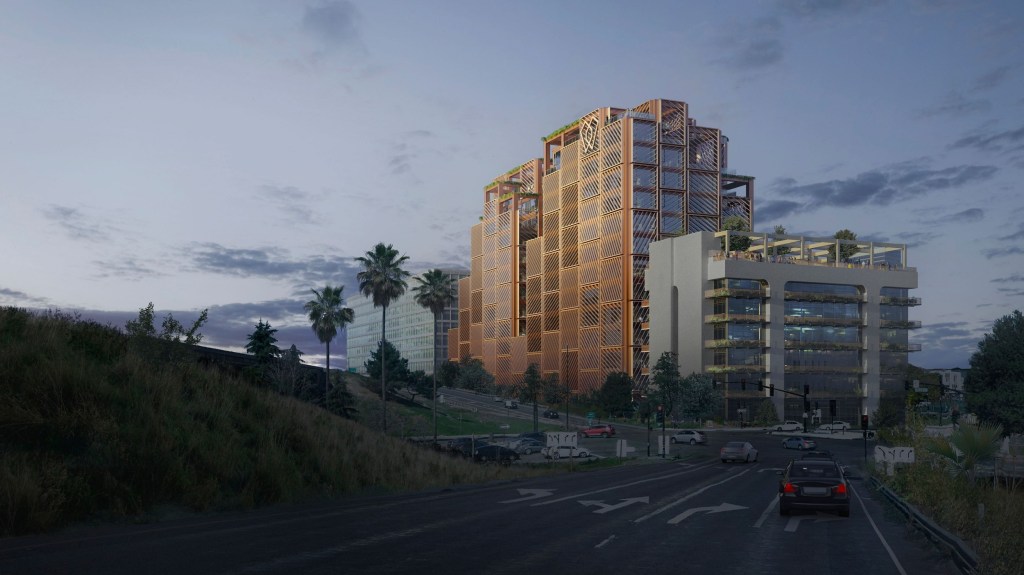The second approach is repetition of a single material, which invites a heightened, almost meditative focus on materiality itself, challenging how we perceive the interplay between a substance and external forces. In Parallel Strata (1969), for instance, Suga stacks blocks of paraffin wax in a columnar formation. As curator Matilde Guidelli-Guidi points out, the only true artistic intervention is the choice to use this material and repeat it until it generates a fort-like, architectural structure. The result defies expectations: wax, typically associated with softness, malleability and ephemerality, here takes on a monolithic presence that is structural, assertive and enduring.
A similar logic drives Soft Concrete (1970), where Suga dismantles our assumptions about solidity. Using the typical elements of reinforced concrete—steel and cement—he subtly subverts purpose. The concrete, charged with machine oil, remains soft and viscous, barely contained by a rigid steel framework. The piece exposes the futility of forcing matter into fixed forms, allowing entropy to spill out, refusing closure. In both works, the material becomes a site of philosophical resistance, insisting on its own behavior, and gesturing toward the limits of human attempts to shape, frame or contain the physical world.
“Rather than conceiving sculptures as autonomous objects, Suga stages incongruous, at times absurdist sculptural situations that probe the unstable order of things,” says Guidelli-Guidi. One particularly striking example is Fieldology (1974), a three-part installation in which straw rope is stretched, sliced and bundled into precisely arranged bales. The work functions as a dynamic stage for testing relationships where the dialogue between sculpture and body, matter and energy, unfolds in continuous, cyclical exchange. This performative essence of the interrelational nature of our space in the world is embedded in the very process of making and installing the work.


In this sense, Suga’s inquiries parallel those of artists like Robert Morris and others associated with process art. Yet for Suga, process is never an end in itself but instead an invitation to observe material with radical attentiveness, freed from the assumptions and associations typically linked to construction, monumentality or sculptural permanence.
In the 1970s, Suga was also working construction jobs, and many of the materials he used in his art came directly from those sites: stone, heavy-duty timber, corrugated prefab concrete panels. Viewed through this lens, and with an awareness of the socio-political context of postwar Japan, Suga’s work reveals an undercurrent of political consciousness. His sculptural arrangements become testing grounds for the structures that govern daily life, exposing and unsettling the infrastructures of containment that reinforce power dynamics and social hierarchies within cities and communities. In this sense, his seemingly abstract installations offer a subtle but incisive commentary on the role of architecture in shaping our interaction with both material and societal realities.
To this point, we can also understand how Suga’s work raises questions not only about perception but about human and societal agency itself. For Suga, form is not the manifestation of the artist’s authorial will but the result of conditions. Compared to the notion of site-specificity or site-responsiveness embraced by many American artists of his generation, there’s a key distinction: Suga’s works were often created in relation to a space and then quite literally left there, abandoned to the effects of surrounding phenomena. In this gesture lies a quiet but pointed critique of the anthropocentric worldview, revealing how human presence and action are always part of a broader entanglement of forces and entities, subject to the universal logic of transformation that exceeds any illusion of control or mastery by the homo faber.
In this, we can also detect echoes between Suga’s work and Deleuze and Guattari’s Assemblage Theory, which radically rethinks how things (bodies, objects, ideas, institutions) form dynamic, provisional constellations. Embracing a deterritorialization of form that disrupts any notion of stable identity, Suga’s assemblages welcome the heterogeneity of the human and nonhuman, organic and synthetic, living and inert, physical and discursive. His sculptural situations offer a more precise image of reality as processual, unstable and open-ended.
Within this dimension of potential co-creation with matter—rather than imposition or control—we find affinities even with the radical notion of “vital materialism” in Jane Bennett’s Vibrant Matter: A Political Ecology of Things (2010), a foundational text of post-anthropocentric materialist thought. In both Suga’s practice and Bennett’s writing, the nonhuman world is not merely symbolic or instrumental, but a collaborator in meaning-making—an agent in a field of interdependencies that demands a different kind of political and ecological attunement. As Bennett writes, “the ethical task at hand here is to cultivate the ability to discern nonhuman vitality, to become perceptually open to it.”
<





